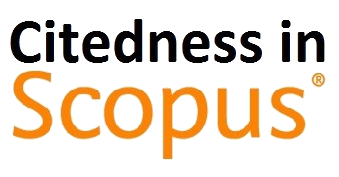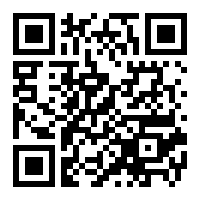Case Based Reasoning using K-Nearest Neighbor with Euclidean Distance for Early Diagnosis of Personality Disorder
(1) Department of Informatic, Faculty of Industrial Engineering Universitas Ahmad Dahlan
(2) Department of Informatic, Faculty of Industrial Engineering Universitas Ahmad Dahlan
(*) Corresponding Author
Abstract
A personality disorder is a condition of a person with an extreme personality that causes the sufferer to have unhealthy and different thoughts patterns and behavior from other people. The personality disorders discussed in this study consisted of 110 diseases with 300 case data and 68 symptoms. Based on Basic Health Research (Riskesdas) 2018 data, it shows that more than 19 million people aged 15 years and over were affected by mental-emotional disorders. Data from the Statistics Indonesia in 2019 that the population of Indonesia is around 265 million people, while according to the Indonesian Clinical Psychologist Association, the number of verified professional psychologists is 1,599 clinical psychologists out of a total membership of 2,078 as of January 2019. However, this figure does not meet the standards of the World Health Organization (WHO), which is that psychologists serve 30 thousand people. This shows that Indonesia still lacks around 28,970 psychologists. The unequal distribution of professional psychologists has made psychologists need a long time to provide a diagnosis because of the number of patients being inversely proportional to the availability of psychologists in Indonesia. Moreover, there is not enough patient knowledge about the symptoms they feel. This study aims to produce a system for diagnosing personality disorders. This study is a case based reasoning to solve problems that have occurred in previous cases using K-Nearest Neighbor to classify data based on the closest distance using the calculation of the Euclidean Distance. Algorithm testing for the system used the Confusion Matrix test. Based on the results of testing data in the 60 case data using K-nearest Neighbor and the calculation of the Euclidean Distance with a score of K=3, it is known that 60 data have 100% similarity to cases with a personality disorder. Meanwhile, testing new cases with 10 case data that were not in the knowledge base was also conducted showing that 9 cases had 100% similarity to the previous case, while another case had 90% similarity to the previous case.
Full Text:
PDFReferences
L. Ekselius, “Personality disorder: a disease in disguise,” Ups. J. Med. Sci., vol. 123, no. 4, pp. 194–204, 2018.
K. Riskesdas, “Hasil Utama Riset Kesehata Dasar (RISKESDAS),” Has. Utama Riskesdas 2018, vol. 44, no. 8, pp. 1–200, 2018.
A. Hendri Soleliza Jones, “Case Based Reasoning Untuk Diagnosis Gangguan Kepribadian Dengan Memanfaatkan Probabilistic Bayesian,” vol. 1, no. 1, 2016.
Y. S. Bagi and S. Suprapto, “Hepatitis Diagnosis Using Case-Based Reasoning with Gradient Descent as Feature Weighting Method,” J. Inf. Syst. Eng. Bus. Intell., vol. 4, no. 1, p. 25, 2018.
V. B. Surya Prasath, H. A. Abu Alfeilat, O. Lasassmeh, A. B. A. Hassanat, and A. S. Tarawneh, “Distance 1–39, 2017.
H. Santoso and A. Musdholifah, “Case Base Reasoning (CBR) and Density Based Spatial Clustering Application with Noise (DBSCAN)-based Indexing in Medical Expert Systems,” Khazanah Inform. J. Ilmu Komput. dan Inform., vol. 5, no. 2, pp. 169–178, 2019.
S. Tahmasebian, M. Langarizadeh, M. Ghazisaeidi, and M. Mahdavi-Mazdeh, “Designing and implementation of fuzzy case-based reasoning system on android platform using electronic discharge summary of patients with chronic kidney diseases,” Acta Inform. Medica, vol. 24, no. 4, pp. 266–270, 2016.
E. P. Purwandari, A. P. Yani, R. Sugraha, K. Anggriani, and E. Widi Winarni, “Online Expert Systems For Bamboo Identification Using Case Based Reasoning,” Int. J. Electr. Comput. Eng., vol. 7, no. 5, p. 2766, 2017.
M. Benamina, B. Atmani, and S. Benbelkacem, “Diabetes Diagnosis by Case-Based Reasoning and Fuzzy Logic,” Int. J. Interact. Multimed. Artif. Intell., vol. 5, no. 3, p. 72, 2018.
Z. Zhai, J. F. M. Ortega, N. L. Martínez, and H. Xu, “An efficient case retrieval algorithm for agricultural case-based reasoning systems, with consideration of case base maintenance,” Agric., vol. 10, no. 9, pp. 1–21, 2020.
P. Zhang, A. Essaid, C. Zanni-Merk, and D. Cavallucci, “Case-based Reasoning for Knowledge Capitalization in Inventive Design Using Latent Semantic Analysis,” Procedia Comput. Sci., vol. 112, pp. 323–332, 2017.
M. Li, H. Xu, X. Liu, and S. Lu, “Emotion recognition from multichannel EEG signals using K-nearest neighbor classification,” Technol. Heal. Care, vol. 26, no. S1, pp. S509–S519, 2018.
Okfalisa, R. Fitriani, and Y. Vitriani, “The comparison of linear regression method and k-nearest neighbors in scholarship recipient,” Proc. - 2018 IEEE/ACIS 19th Int. Conf. Softw. Eng. Artif. Intell. Netw. Parallel/Distributed Comput. SNPD 2018, pp. 194–199, 2018.
E. N. dkk Shofia, “Sistem Pakar Diagnosis Penyakit Demam : DBD , Malaria dan Tifoid Menggunakan Metode K-Nearest Neighbor – Certainty Factor,” J. Pengemb. Teknol. Inf. dan Ilmu Komput., vol. 1, no. 5, pp. 426–435, 2017.
D. Dananjaya, I. Werdiningsih, and R. Semiati, “Decision Support System for Classification of Early Childhood Diseases Using Principal Component Analysis and K-Nearest Neighbors Classifier,” J. Inf. Syst. Eng. Bus. Intell., vol. 5, no. 1, p. 13, 2019.
O. Olaide and A. F. D. Kana, “OWL Formalization of Cases : An Improved Case-Based Reasoning in Diagnosing International Journal of Information Security , Privacy and Digital Forensics OWL Formalization of Cases : An Improved Case-Based Reasoning in Diagnosing and Treatment of Breast Cancer,” no. September 2020, 2019.
M. Hoffmann and F. Noé, “Generating valid euclidean distance matrices,” arXiv, 2019.
P. Singh, S. Singh, and G. pandi jain, “Effective heart disease prediction system using data mining techniques.” International Journal Of Nanomedicine, Gujarat, India, p. 4, 2021.
D. Chicco, N. Tötsch, and G. Jurman, “The matthews correlation coefficient (Mcc) is more reliable than balanced accuracy, bookmaker informedness, and markedness in two-class confusion matrix evaluation,” BioData Min., vol. 14, pp. 1–22, 2021.
T. Rosandy, “PERBANDINGAN METODE NAIVE BAYES CLASSIFIER DENGAN METODE DECISION TREE (C4.5) UNTUK MENGANALISA KELANCARAN PEMBIAYAAN (Study Kasus : KSPPS / BMT AL-FADHILA,” J. Teknol. Inf. Magister Darmajaya, vol. 2, no. 01, pp. 52–62, 2016.
F. Rahmad, Y. Suryanto, and K. Ramli, “Performance Comparison of Anti-Spam Technology Using Confusion Matrix Classification,” IOP Conf. Ser. Mater. Sci. Eng., vol. 879, no. 1, 2020.
Subari and Ferdinandus, “Sistem Information Retrieval Layanan Kesehatan Untuk Berobat Dengan Metode Vector Space Model (Vsm) Berbasis Webgis,” Snatika2, no. November, pp. 202–212, 2015.
M. Martin and L. Nilawati, “Recall dan Precision Pada Sistem Temu Kembali Informasi Online Public Access Catalogue (OPAC) di Perpustakaan,” Paradig. - J. Komput. dan Inform., vol. 21, no. 1, pp. 77–84, 2019.
D. A. Fauziah et al., “Klasifikasi Berita Politik Menggunakan Algoritma K-nearst Neighbor ( Classification of Political News Content using K-Nearest Neighbor ) Abstrak,” J. Sist. Inf. Univ. Jember, vol. 6, no. 2, p. 8, 2018.
DOI: https://doi.org/10.30645/ijistech.v5i1.111
Refbacks
- There are currently no refbacks.
Jumlah Kunjungan:
Published Papers Indexed/Abstracted By:












